#installing HVAC system
Explore tagged Tumblr posts
Text
#installing HVAC system#HVAC installation process#HVAC installation guide#HVAC system testing#professional HVAC installation services
0 notes
Text
Messmer Mechanical has been Jasper’s trusted plumbing & HVAC expert for over 50 years. We offer AC repair, heating installation, water heaters, commercial HVAC, and more. Whether you need a new AC system, drain cleaning, or a geothermal heat pump, we have you covered. Contact us today for reliable service and a free quote.
Our Services - new ac system jasper, plumbing repair jasper, new heating system jasper, water heater jasper, plumber jasper, plumbing jasper, ac repair jasper, heating repair jasper, clogged drain jasper, commercial boiler services jasper, commercial chiller services jasper, commercial hvac maintenance plan jasper, dustless air system jasper, new water heater jasper, tankless water heater jasper, commercial hvac installation jasper, commercial hvac repair jasper, commercial plumber jasper, commercial plumbing jasper, commercial refrigeration jasper, cooling tower services jasper, drain cleaning jasper, kitchen plumbing upgrades, rooftop hvac systems jasper, geothermal heat pump jasper, water treatment jasper, bathroom plumbing upgrades, commercial design-build contractor jasper
For More Information Visit Our Website - https://messmermechanical.com
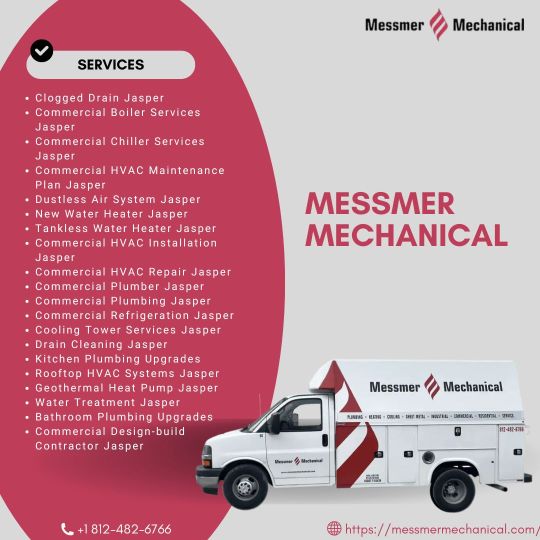
#new ac system jasper#plumbing repair jasper#new heating system jasper#water heater jasper#plumber jasper#plumbing jasper#ac repair jasper#heating repair jasper#clogged drain jasper#commercial boiler services jasper#commercial chiller services jasper#commercial hvac maintenance plan jasper#dustless air system jasper#new water heater jasper#tankless water heater jasper#commercial hvac installation jasper#commercial hvac repair jasper#commercial plumber jasper#commercial plumbing jasper#commercial refrigeration jasper#cooling tower services jasper#drain cleaning jasper#kitchen plumbing upgrades#rooftop hvac systems jasper#geothermal heat pump jasper#water treatment jasper#bathroom plumbing upgrades#commercial design-build contractor jasper
2 notes
·
View notes
Text
The Importance of Timely Air Filter Replacements
Regular filter replacements are crucial for maintaining optimal performance and extending the lifespan of various household appliances. Whether it’s your HVAC system, water purifier, or car engine, changing filters at the recommended intervals can significantly impact efficiency and health.
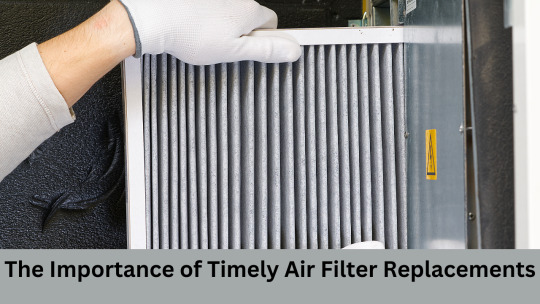
Improved Air Quality
One of the primary benefits of regular filter replacements is improved air quality. Air filters, especially in HVAC systems, trap dust, pollen, and other airborne particles, preventing them from circulating throughout your home. Over time, these filters become clogged, reducing their effectiveness and allowing contaminants to bypass the filter. Regular replacement ensures that the air in your home remains clean and free from allergens, which is particularly beneficial for individuals with respiratory issues such as asthma or allergies.
Enhanced Appliance Efficiency
Appliances such as HVAC systems, refrigerators, and air purifiers rely on clean filters to operate efficiently. When filters are clogged, these appliances must work harder to push air or water through the system, leading to increased energy consumption and higher utility bills. By replacing filters regularly, you ensure that your appliances operate smoothly and efficiently, saving both energy and money in the long run.
Prolonged Appliance Lifespan
Neglecting filter replacements can lead to significant wear and tear on your appliances. For instance, a clogged air filter in your HVAC system can cause the unit to overheat, potentially leading to system failures and costly repairs. Similarly, dirty water filters can cause water purifiers to become inefficient, potentially leading to damage over time. Regular filter replacements help maintain the proper function of these appliances, thereby extending their operational lifespan and reducing the need for frequent repairs or replacements.
Cost Savings
While replacing filters involves a recurring cost, it is a cost-effective measure in the long term. Clean filters ensure that appliances run efficiently, leading to lower energy consumption and fewer repair needs. This preventative maintenance reduces the likelihood of major breakdowns, saving you money on expensive repairs and replacements. You can take the help of skilled technicians for timely replacement or maintenance of your air filter
Conclusion
In conclusion, the impact of regular filter replacements is profound. From enhancing air quality and appliance efficiency to prolonging the lifespan of your appliances and saving on energy costs, the benefits are clear. By adhering to recommended filter replacement schedules, you can ensure a healthier living environment and more efficient home operations.
#air filter#the replacements#importance#Filter Replacements#air filter replacement#hvac systems#home & lifestyle#hvac installation
2 notes
·
View notes
Text
#HVAC Contractor in San Diego CA#Air Conditioning Contractor in San Diego CA#HVAC System Repair near me#HVAC Installation Service near me#Air Conditioning Installation Service near me
2 notes
·
View notes
Text
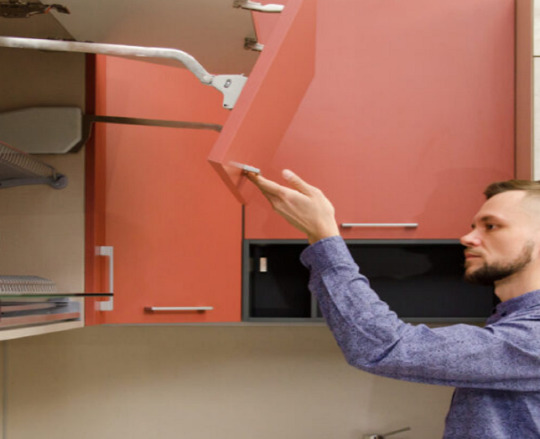
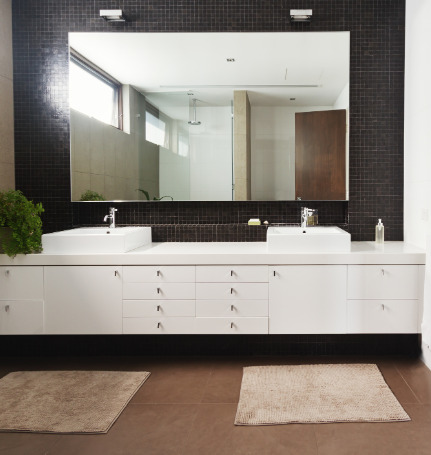
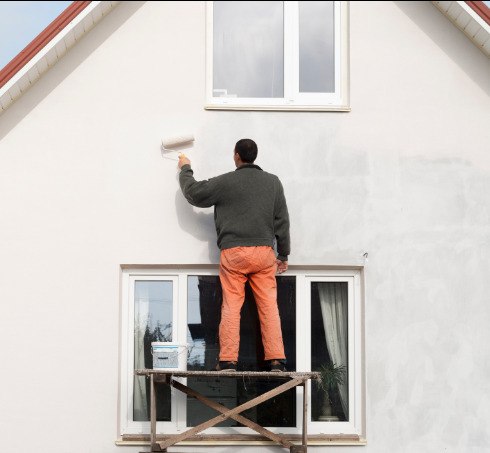
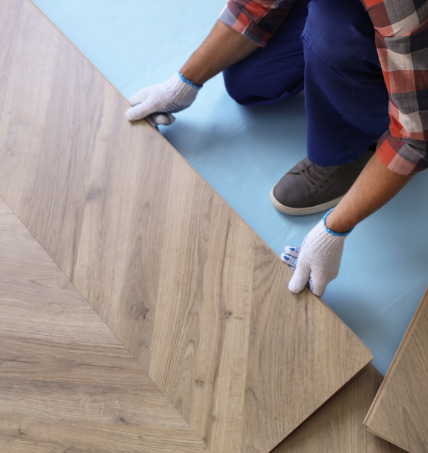
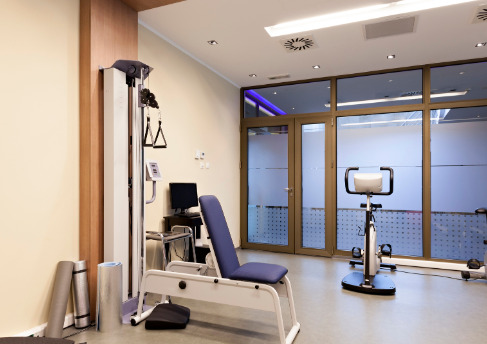
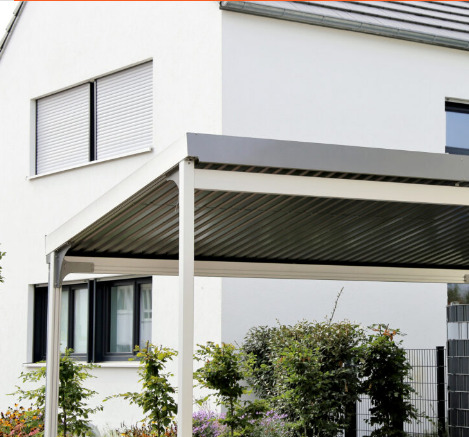
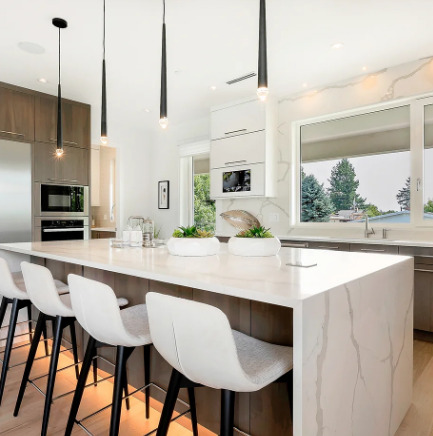
Website : https://keystoneremodelingredmond.com/
Address : 7525 166th Ave NE, Redmond, WA 98052
Phone : +1 425-900-6254
We’re a family-owned construction firm specializing in home remodeling and renovation in Redmond, WA.
Business Email : [email protected]
#Bathroom Remodeling#Garage conversion#Architectural Plans#HVAC Systems and Components#Engineering plans#Concrete#Drywall#Demolition#Interior Designer#Backyard remodeling#Interior Painting#Artificial Turf#Hardscaping and Outdoor Design#Carport#Room addition#Ceiling#Attic#Wall Insulation#Wood or Composite Wood#Electrical Fixtures Installation#Electrical Rewire#Exterior Painting#Kitchen Remodeling#hardwood#laminate#tile#carpet#Siding#Roofing#Windows and Doors
2 notes
·
View notes
Text

Living in Air conditioning installation in Winnipeg means being ready for temperature swings on both ends of the spectrum. While heating gets a lot of attention, summer heat is just as important to plan for. Investing in a reliable, energy-efficient air conditioning system not only makes your home more comfortable, it adds value and peace of mind.
Whether you’re replacing an old unit or installing AC for the first time, working with a trusted local professional is the best way to ensure you get the right system for your needs.
#HVAC#air conditioning#air conditioning installation#HVAC installation#home cooling systems#energy-efficient cooling#ductless AC#central air conditioning#AC maintenance#air conditioning repair#Winnipeg HVAC#Winnipeg air conditioning#air conditioning Winnipeg#HVAC services Winnipeg#Manitoba cooling solutions#Winnipeg home improvement#summer home tips#stay cool in summer#home comfort#home renovation#indoor climate control#summer HVAC tips#energy saving tips#Manitoba Hydro rebates#HVAC financing#reduce energy bills#efficient home upgrades
0 notes
Text
#New AC System Jasper#Plumbing Repair Jasper#New Heating System Jasper#Water Heater Jasper#Plumber Jasper#Plumbing Jasper#AC Repair Jasper#Heating Repair Jasper#Clogged Drain Jasper#Commercial Boiler Services Jasper#Commercial Chiller Services Jasper#Commercial HVAC Maintenance Plan Jasper#Dustless Air System Jasper#New Water Heater Jasper#Tankless Water Heater Jasper#Commercial HVAC Installation Jasper#Commercial HVAC Repair Jasper#Commercial Plumber Jasper#Commercial Plumbing Jasper#Commercial Refrigeration Jasper#Cooling Tower Services Jasper#Drain Cleaning Jasper#Kitchen Plumbing Upgrades#Rooftop HVAC Systems Jasper#Geothermal Heat Pump Jasper#Water Treatment Jasper#Bathroom Plumbing Upgrades#Commercial Design-Build Contractor Jasper
0 notes
Text
Boost Comfort & Efficiency: Heat Pump Replacement Services in Raleigh NC
When it comes to maintaining year-round indoor comfort, a reliable heat pump is essential—especially in the varying climate of Raleigh. Whether your system is outdated, inefficient, or constantly in need of repair, it may be time to consider a professional heat pump replacement in Raleigh NC. That’s where the experts at Bowman Heating & Cooling come in.
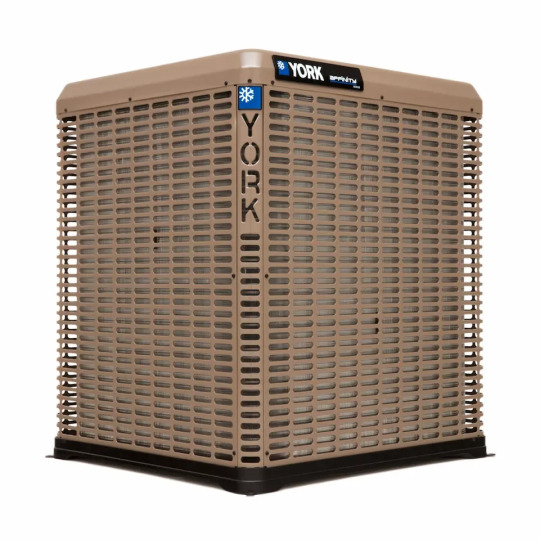
Why Choose Heat Pump Replacement?
If your current heat pump is over 10 years old or no longer meeting your heating and cooling needs, replacing it can offer major benefits:
Improved energy efficiency
Lower monthly utility bills
More consistent indoor temperatures
Reduced repair costs
Environmentally friendly operation
Newer systems are designed with advanced technology that ensures your home stays comfortable no matter the season. At Bowman Heating & Cooling, we help you choose the right system for your space and budget.
Signs You Need a Heat Pump Replacement
Not sure if it’s time for a replacement? Look for these signs:
Frequent repairs or breakdowns
Unusually high energy bills
Inconsistent heating or cooling
Strange noises or odors
System age of 10–15 years or more
If you’re experiencing one or more of these issues, it’s time to reach out to Bowman Heating & Cooling for a professional assessment.
Our Heat Pump Replacement Process
At Bowman Heating & Cooling, we make the heat pump replacement in Raleigh NC simple and stress-free. Here’s what to expect:
Thorough system inspection
Expert recommendations based on your home size, layout, and efficiency goals
Professional installation with minimal disruption
Post-installation support and warranty guidance
Why Choose Bowman Heating & Cooling?
With decades of HVAC experience, Bowman Heating & Cooling is a trusted name for reliable, energy-efficient solutions in Raleigh and surrounding areas..
When you choose us for your heat pump replacement in Raleigh NC, you’re not just getting a new system — you’re investing in long-term comfort and efficiency.
Ready to Upgrade Your Comfort?
Don’t let an old, inefficient system drain your wallet. Contact Bowman Heating & Cooling today for expert heat pump replacement services in Raleigh NC. Your comfort is our priority — year-round.
Originally published at —
#heat pump repair raleigh#heat pump repair raleigh nc#raleigh heat pump repair#heat pump replacement raleigh nc#heat pump repair garner#Raleigh Heating System Replacement and Installation#Heating System Replacement Raleigh#hvac replacement raleigh nc#Heating System Replacement Garner#Raleigh Heating Repairs#Heating Repairs Services Raleigh#heating repairs Raleigh#heating repair Raleigh nc#heating and cooling repair Garner
0 notes
Text
Key Phases of Commercial Construction
Explore the key phases of commercial construction and how expert contractors streamline each stage for efficiency, compliance, and quality. This presentation highlights end-to-end project management with integrated MEP services.
#commercial construction phases#general contractor Carolina#MEP services#construction project management#commercial building contractors#HVAC installation#electrical and plumbing systems#construction planning#site preparation#construction timeline
0 notes
Text
What to Expect During a Professional Heating System Installation in Courtice

When it comes time to replace or install a new heating system in your Courtice home, understanding the installation process can help set your expectations and ensure a smooth experience. A professional installation ensures that your new system operates efficiently, providing consistent warmth and optimal comfort. Whether you're upgrading an old unit or installing a system for the first time, here's what you can expect during a professional heating system installation with an expert HVAC contractor in Courtice like True North Home Comfort.
1. Initial Consultation and Assessment
Before installation begins, the first step is scheduling a consultation with your HVAC contractor. During this visit, a professional will assess your home’s heating needs. This includes evaluating the size of your home, the number of rooms, insulation quality, and your current heating system (if you’re replacing an existing unit). The contractor will also take note of any specific needs or preferences you may have regarding the new system.
At True North Home Comfort, we offer tailored recommendations based on the results of the assessment. We’ll guide you through various heating options, whether it’s a furnace, heat pump, or other system, ensuring that the choice fits your home’s size and energy efficiency goals.
2. Choosing the Right Heating System
Once the assessment is complete, your HVAC contractor will help you select the best heating system for your home. This includes considering factors like system efficiency, fuel source (gas, electric, or oil), and your desired comfort level.
During this stage, the contractor will also discuss the energy efficiency ratings of various systems, which is crucial for minimizing long-term utility costs. After you've selected a system that fits your needs, your HVAC contractor will provide a detailed estimate for the installation, including labor and equipment costs.
3. Preparation for Installation
On installation day, your HVAC contractor will arrive on time and begin by preparing the area for the new system. This includes shutting down any existing heating system, removing old components, and ensuring that your home is safe for the installation process.
If you’re replacing an old unit, the professional will carefully remove it, ensuring proper disposal according to local regulations. Depending on the complexity of the installation, minor adjustments may be needed, such as installing new ductwork or upgrading your thermostat.
4. System Installation
The actual installation of the new system involves several detailed steps, including:
Placing the Unit: The HVAC contractor will position the new heating system in its designated location, whether it’s a furnace in the basement or a heat pump outside your home.
Connecting Ductwork or Vents: The contractor will connect the system to the existing ductwork or install new ducts if necessary. This ensures proper airflow throughout your home.
Electrical Connections and Calibration: If your new system requires electrical connections, the HVAC professional will ensure everything is set up safely and correctly. Calibration will also be performed to ensure optimal performance, including adjusting the thermostat and setting the system for maximum efficiency.
True North Home Comfort’s team ensures every step of this process is done to code and with meticulous attention to detail, ensuring your system operates smoothly.
5. System Testing and Final Adjustments
After installation, your HVAC contractor will test the system to ensure it’s functioning properly. This includes checking for correct airflow, making sure the system is heating your home evenly, and ensuring that all components are working as expected. The contractor will also inspect the installation for safety, ensuring that all parts are secure and the system meets local safety codes.
If any adjustments are needed, such as recalibrating the thermostat or fine-tuning the system for better efficiency, your HVAC contractor will make those changes at this stage.
6. Post-Installation Walkthrough
Once the system is installed and tested, your HVAC contractor will walk you through the system’s features and provide instructions on how to operate it. This includes setting the thermostat, understanding energy-saving settings, and basic maintenance tips to ensure the longevity of your new system.
Your contractor may also offer an optional maintenance plan to keep your system running smoothly over the years. This is a great way to prevent future issues and ensure your heating system stays in peak condition year-round.
7. Clean-Up and Final Inspection
A professional HVAC contractor will always clean up after the installation, leaving your home in pristine condition. They’ll remove any debris, packaging, or old parts and ensure that everything is tidy before they leave.
After cleaning, a final inspection will be conducted to ensure that all parts of the installation are in place and working correctly. This is a great opportunity for you to ask any remaining questions or address any concerns.
Conclusion
Professional heating system installation in Courtice ensures that your new system works efficiently and reliably for years to come. By choosing a trusted HVAC contractor in Courtice like True North Home Comfort, you’re guaranteed expert advice, quality installation, and long-term comfort. Our team of experienced professionals is committed to providing a seamless installation process, from consultation to final inspection.
If you're ready to install a new heating system or have questions about the process, contact True North Home Comfort today. We’re here to help you choose the right system and provide expert installation for your home.
True North Home Comfort unit # 1, 1700 Baseline Rd W, Courtice, ON L1E 2S8, Canada 905-419-3132 https://truenorthhomecomfort.ca/ https://maps.app.goo.gl/5N43a3hrkVpzySZd9
1 note
·
View note
Text
Top Adaptation Companies in Riyadh (شركات التكيف بالرياض) for Innovative Solutions
Adaptation companies in Riyadh (شركات التكيف بالرياض) play a crucial role in helping businesses and infrastructure evolve with changing environmental and technological demands. These firms offer tailored solutions in sustainability, energy efficiency, and smart technologies. With expert planning and local insights, adaptation companies in Riyadh ensure long-term resilience and growth for urban developments, commercial spaces, and industrial projects.
0 notes
Text
Maximize Comfort with Precision AC Installation

Installing a new air conditioning system isn’t just about staying cool—it’s about energy efficiency, indoor air quality, and long-term reliability. At Global Green Solutions, we deliver custom AC installation services tailored to your home’s layout, insulation, and comfort goals. Whether you’re upgrading from an outdated unit or installing central air for the first time, we handle everything from proper load calculations and ductwork inspection to seamless installation and smart thermostat integration. We don’t cut corners—we build systems that perform.
Ready for dependable cooling that saves you money?
Call now to schedule expert AC installation with Global Green Solutions.
For more information visit our website: Global Green Solutions 🌐 www.ggsar.com/ 📍 20746 Clarendon St, Woodland Hills, CA 91367 📞 Phone: (310) 269-0002 https://maps.app.goo.gl/E5KA6Eh9zbZfunGC6
#AC installation#air conditioner installation#HVAC installation#central air installation#AC replacement#AC install near me#residential AC installation#commercial AC installation#energy efficient AC#home cooling solutions#Los Angeles HVAC#AC technician#split system installation#air conditioning services#HVAC contractor#cooling system upgrade#professional AC installation
0 notes
Text
The Ultimate HVAC Troubleshooting Guide: Fix Common Heating & Cooling Issues Fast
Your HVAC system is the backbone of your home’s comfort—keeping you cool in the summer and warm in the winter. But when your heating or cooling system breaks down, it can throw off your entire routine. The good news? Many common HVAC problems are easy to troubleshoot and fix yourself if you know what to look for.
In this ultimate HVAC troubleshooting guide, you’ll discover how to quickly identify and resolve typical heating and cooling issues, prolong your system’s lifespan, and avoid costly repairs. Whether you’re a homeowner, renter, or property manager, this guide is designed to help you maintain efficient, reliable HVAC performance all year long.
By understanding how your HVAC system works and learning simple troubleshooting tips, you can save money on energy bills, improve indoor air quality, and stay comfortable no matter the season.
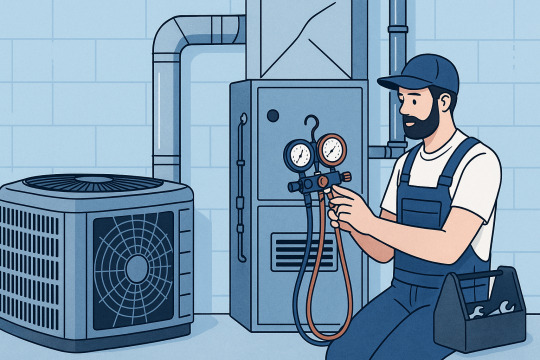
HVAC troubleshooting guide
How Your HVAC System Works: The Basics
Before jumping into troubleshooting your HVAC system, it’s essential to understand the fundamental components and how they work together to keep your home comfortable throughout the year. Your HVAC system — short for Heating, Ventilation, and Air Conditioning — is a complex network designed to regulate indoor temperature, control humidity, and improve air quality.
Key Components of an HVAC System
Understanding each part helps you diagnose potential issues faster and perform routine maintenance more effectively. Here are the critical components:
Thermostat: The thermostat is the brain of your HVAC system. It constantly monitors the indoor temperature and communicates with the heating and cooling units. When the temperature falls below or rises above your desired setting, the thermostat sends a signal to turn on the furnace or air conditioner accordingly.
Furnace: The furnace is responsible for heating your home during cold weather. It works by warming air, usually by burning fuel such as natural gas, propane, or using electric elements. The heated air is then distributed throughout your house via the ductwork system.
Air Conditioner (AC) Unit: The air conditioner cools your home by removing heat from the indoor air and releasing it outside. It circulates refrigerant — a special fluid — through a cycle that absorbs heat inside and expels it outdoors, lowering the temperature inside your home.
Ductwork: Ducts are the network of channels that carry heated or cooled air from the furnace or AC unit to each room. Properly sealed and insulated ducts are crucial for efficient airflow and maintaining consistent temperatures throughout your living space.
Air Filters: Air filters trap dust, dirt, allergens, and other airborne particles to protect the sensitive components inside your HVAC system and to improve your indoor air quality. Regularly changing or cleaning air filters is vital to keep your system running smoothly and efficiently.
Blower Motor: The blower motor powers the fan that moves heated or cooled air through the ductwork and into your rooms. If the blower motor fails or runs inefficiently, you may experience poor airflow or uneven heating and cooling.
Refrigerant: Refrigerant is the lifeblood of the cooling process. It is a fluid that absorbs heat from indoor air and releases it outside. The refrigerant cycles between liquid and gas states inside the AC unit’s components, enabling heat transfer that cools your home.
How Heating and Cooling Cycles Work in Your HVAC System
To troubleshoot effectively, it’s helpful to know how heating and cooling cycles operate within your HVAC system:
Heating Cycle
When your thermostat detects that the indoor temperature has dropped below the preset level, it sends a signal to the furnace to turn on. Inside the furnace, fuel combustion or electric heating elements generate warm air. The blower motor then activates, pushing this warm air through the ductwork and distributing it evenly throughout your home.
The heating cycle continues until the thermostat senses the desired temperature has been reached, at which point it signals the furnace to shut off. This on-and-off cycling maintains a comfortable temperature while optimizing energy usage.
Cooling Cycle
On hot days, the thermostat monitors when indoor temperatures rise above the desired setting. When this happens, it triggers the air conditioning system. The AC unit’s compressor circulates refrigerant through the system, which absorbs heat from the indoor air at the evaporator coil. This heat is then carried outside and released via the condenser coil.
Simultaneously, the blower motor pushes the now cooled air through the ducts into your rooms. This cooling cycle repeats until the thermostat registers that the room temperature has dropped to the preferred level, signaling the AC to turn off.
Why Understanding Your HVAC Cycle Matters for Troubleshooting
Knowing how heating and cooling cycles work helps you pinpoint where common issues might originate — whether they involve electrical controls like the thermostat and circuit breakers, mechanical components like the blower motor and compressor, or airflow problems caused by clogged filters or duct leaks.
For example:
If your furnace is running but your home isn’t warming up, it might indicate an issue with airflow (like dirty filters or blocked ducts) or a malfunctioning burner.
If your AC runs but blows warm air, it could be due to low refrigerant levels or dirty coils.
If the system doesn’t turn on at all, it might be a thermostat problem or a tripped circuit breaker.
By familiarizing yourself with these basics, you’ll be better equipped to diagnose issues quickly, understand technician recommendations, and perform simple maintenance tasks that keep your HVAC system running efficiently year-round.
Common HVAC Problems and How to Fix Them Quickly
Your HVAC system is vital for maintaining comfort in your home year-round. However, even the best heating and cooling systems can encounter problems. Identifying and fixing these common HVAC issues early can save you money, prevent damage, and keep your system running efficiently.
1. HVAC System Won’t Turn On
One of the most frustrating problems is when your HVAC system refuses to start at all. This issue can stem from simple user errors or more technical faults.
Common Causes and Quick Fixes:
Check Thermostat Settings: Verify that your thermostat is set correctly. For heating season, it should be on “Heat,” and during warmer months, it should be set to “Cool.” Also, make sure the temperature is set below (for cooling) or above (for heating) the current room temperature to activate the system.
Reset Circuit Breaker: HVAC systems often have a dedicated breaker in your home’s electrical panel. A power surge or overload can trip the breaker, cutting power to the system. Resetting it might restore operation.
Inspect Power Switches: Similar to a light switch, HVAC units have an on/off power switch, usually located near the furnace or outside AC unit. Ensure it’s switched on.
Replace Thermostat Batteries: If your thermostat uses batteries, dead batteries could prevent it from signaling the system. Swap batteries regularly to avoid downtime.
If none of these quick checks resolve the issue, it could be a problem with wiring, the control board, or other electrical components — a licensed technician should inspect these.
2. Air Conditioner Blowing Warm Air
If your AC is running but not cooling, it’s failing to perform its primary function and needs prompt attention.
Why This Happens:
Low Refrigerant Levels: Refrigerant is essential for heat transfer. Leaks caused by damaged coils or loose fittings reduce cooling efficiency drastically.
Dirty Evaporator or Condenser Coils: When coils get coated with dirt and grime, heat exchange is impaired. This causes the AC to struggle to cool your home.
Clogged Air Filters: Filters clogged with dust and debris restrict airflow, forcing the system to work harder and reducing cooling effectiveness.
Thermostat Settings Misconfigured: Sometimes, the simplest cause is an incorrectly set thermostat not in cooling mode.
DIY Solutions to Try:
Change or Clean Air Filters: Replace filters every 1 to 3 months, depending on usage and indoor air quality. Clean filters enhance airflow and system efficiency.
Clean Condenser Coils: Carefully hose off dirt and debris from the outdoor condenser unit. Be sure to turn off power before cleaning.
Verify Thermostat Settings: Double-check that the system is set to “Cool” and the fan is set to “Auto” to ensure proper cycling.
Persistent problems like refrigerant leaks require a licensed HVAC professional to diagnose and recharge your system safely.
3. Furnace Not Heating Properly
A furnace that fails to produce enough heat can leave your home uncomfortably cold and raise heating costs.
Typical Causes and Solutions:
Pilot Light Is Out (Gas Furnaces): Older furnaces use a pilot light to ignite burners. If it’s gone out, follow the manufacturer’s instructions to relight it safely.
Dirty or Clogged Air Filters: Just like with AC, clogged filters reduce airflow and cause the furnace to work inefficiently. Change filters regularly.
Faulty Ignitor: A worn or broken ignitor will prevent burners from lighting, meaning no heat is produced. This is a common failure in gas furnaces.
Thermostat Calibration Issues: Sometimes the thermostat reading isn’t accurate. Use a separate thermometer to compare and recalibrate or replace the thermostat if needed.
If these basic steps don’t solve the problem, faulty burners, a malfunctioning gas valve, or issues with the blower motor could be to blame, warranting professional attention.
4. Strange Noises From Your HVAC System
Unusual sounds coming from your HVAC system can be an early warning sign of mechanical or electrical issues.
Common Noise Types and What They Mean:
Banging or Clanking: Often caused by loose or broken parts inside the blower or duct system. These noises can also occur if debris is trapped.
Squealing or Screeching: Typically indicates worn or misaligned belts or motor bearings that require lubrication or replacement.
Hissing: This may signal a refrigerant leak or air escaping from ducts, both of which reduce efficiency and comfort.
Clicking: Clicking sounds can come from electrical components like relays or switches failing to engage properly.
What You Should Do:
If the noise is loud or persistent, turn off your HVAC system immediately to prevent further damage.
Inspect for loose panels, screws, or visible debris.
Contact a qualified technician to diagnose and repair the problem safely, especially for electrical or refrigerant issues.
5. Uneven Temperature in Different Rooms
Experiencing hot and cold spots around your home is a common HVAC issue that indicates airflow imbalance or system problems.
Potential Causes Include:
Blocked or Closed Vents: Furniture, curtains, or pets can block vents, reducing airflow to specific rooms.
Leaky or Poorly Insulated Ductwork: Holes, gaps, or missing insulation in ducts let conditioned air escape before reaching rooms.
Improperly Sized HVAC Unit: An undersized system cannot adequately heat or cool your entire home, while an oversized unit can cause frequent cycling and uneven temperatures.
Dirty Air Filters: Reduced airflow caused by clogged filters can make it difficult to maintain consistent temperature throughout the house.
How to Address the Issue:
Make sure all supply and return vents are open and unblocked.
Inspect ductwork for visible leaks and seal them using mastic sealant or metal foil tape.
Add insulation to ductwork, especially in unconditioned spaces like basements or attics.
Consult an HVAC professional to evaluate your system size and recommend upgrades if necessary.
6. HVAC Leaks and Moisture Problems
Leaks and moisture buildup in your HVAC system can cause water damage, promote mold growth, and reduce system efficiency.
Common Causes:
Clogged Condensate Drain Line: The drain removes condensation from your AC. Blockages cause water to back up, leading to leaks around the indoor unit.
Refrigerant Leaks Causing Coil Freeze and Thaw: Low refrigerant can cause the evaporator coil to freeze and then thaw, creating water overflow.
Poor Duct Insulation: Condensation can form on cold ducts if they are not insulated properly.
Damaged or Rusted Drain Pans: Over time, drain pans can corrode, leading to leaks.
Solutions:
Clear the condensate drain line regularly using a wet/dry vacuum or a specialized cleaning solution.
Seal any duct leaks and insulate ducts to reduce condensation risks.
Replace damaged drain pans promptly to prevent water damage.
Have a professional inspect refrigerant lines and recharge refrigerant if necessary.
7. Poor Airflow Through Vents
Weak airflow makes your home uncomfortable and forces your HVAC system to work harder, increasing wear and energy costs.
Why Poor Airflow Happens:
Dirty or clogged air filters.
A failing blower motor or blower fan.
Blocked, crushed, or leaky ducts.
Closed or obstructed supply vents.
How to Fix It:
Replace air filters every 1 to 3 months to keep air flowing freely.
If airflow remains weak, have an HVAC technician check the blower motor and fan for damage or wear.
Clean or professionally service your duct system to remove dust and debris buildup.
Ensure all vents are open and unobstructed by furniture or other objects.
8. Sudden Increase in Energy Bills
A spike in your utility bills often indicates your HVAC system is struggling to operate efficiently.
Common Culprits:
An aging HVAC system nearing the end of its lifespan.
Leaky or poorly sealed ductwork wasting conditioned air.
Dirty filters, coils, and components causing your system to work harder.
Improper thermostat settings or lack of programmable scheduling.
Energy-Saving Tips:
Upgrade to a programmable or smart thermostat to optimize heating and cooling schedules based on your routine.
Schedule regular HVAC maintenance, including filter changes, coil cleaning, and system tune-ups.
Have your ductwork inspected and sealed by professionals to prevent air loss.
Consider investing in energy-efficient HVAC equipment if your system is outdated.
Essential HVAC Troubleshooting Tools to Keep on Hand
Having the right tools can make basic troubleshooting safer and easier.
Thermometer: Checks temperature at vents.
Multimeter: Tests electrical circuits and components.
Replacement Filters: For quick filter swaps.
Flashlight: Illuminates hard-to-see parts.
Wet/Dry Vacuum: Clears condensate drains.
Basic Hand Tools: Screwdrivers, wrenches, pliers.
Seasonal HVAC Troubleshooting and Maintenance Tips for Optimal Performance
Proper seasonal maintenance is essential for keeping your HVAC system running efficiently, preventing unexpected breakdowns, and extending the lifespan of your equipment. Each season brings unique challenges to your heating and cooling system, and tailored care ensures your home stays comfortable year-round.
Spring & Summer HVAC Maintenance Tips
As temperatures rise, your air conditioner works harder to keep your home cool. Preparing your system for the warmer months can improve performance and energy efficiency while preventing costly repairs.
Replace or Clean Air Filters Regularly: Dirty air filters restrict airflow, reducing your AC’s efficiency and potentially causing system damage. Replace or clean filters every 1 to 3 months during heavy use.
Inspect Refrigerant Lines for Damage or Leaks: Refrigerant is the heart of your cooling system. Check the refrigerant lines for any visible cracks, wear, or leaks, which can impair cooling capacity and increase energy bills.
Clean Outdoor Condenser Coils: The condenser unit collects dirt, leaves, and debris that reduce heat exchange. Gently clean the coils with a hose or coil cleaner to maintain optimal cooling performance.
Test Thermostat Cooling Functions: Verify that your thermostat is accurately controlling the temperature. Consider upgrading to a programmable or smart thermostat for better energy management.
Clear Condensate Drain Lines: Moisture removal is vital to prevent water damage and mold growth. Ensure condensate drain lines are clear and flowing freely to avoid clogs and backups.
Fall & Winter HVAC Maintenance Tips
As temperatures drop, your heating system takes over. Proper fall and winter maintenance ensures your furnace or heat pump runs safely and efficiently throughout the cold months.
Schedule Furnace Tune-Ups: Professional inspections and cleaning of your furnace ensure it operates safely and at peak efficiency. A technician will check burners, heat exchangers, and other critical components.
Change Air Filters: Just as in summer, clean filters promote proper airflow and reduce strain on your heating system. Replace filters monthly during peak heating season.
Seal Ducts and Check Vents: Prevent heat loss by sealing gaps or leaks in ductwork and ensuring all vents are open and unobstructed. Proper airflow distribution improves comfort and lowers energy bills.
Test Carbon Monoxide Detectors: Carbon monoxide is a dangerous, odorless gas that can leak from malfunctioning furnaces. Test your detectors monthly and replace batteries regularly to ensure your family’s safety.
When to Call an HVAC Professional
While many maintenance tasks can be handled by homeowners, certain issues require expert diagnosis and repair to ensure safety, reliability, and compliance with local codes.
System Won’t Turn On After Basic Troubleshooting: If your HVAC system fails to respond after checking thermostat settings, circuit breakers, and power switches, it’s time to call a professional.
Persistent Strange Noises or Odors: Unusual sounds like banging, squealing, or hissing, or burning smells may indicate serious mechanical or electrical problems needing immediate attention.
Refrigerant Leaks or Visible Ice Buildup: Refrigerant leaks reduce cooling effectiveness and damage the environment, while ice buildup on coils can harm system components.
Frequent System Cycling: Short cycling, where the system turns on and off rapidly, indicates issues like oversized equipment, thermostat malfunctions, or airflow restrictions.
Electrical Problems Like Tripped Breakers or Burning Smells: Electrical faults are serious safety hazards and should only be addressed by certified technicians.
Choosing the Right HVAC Contractor: Always hire licensed, certified, and insured HVAC professionals with positive customer reviews and proven experience. Reliable contractors ensure quality repairs, proper maintenance, and safety compliance.
Preventive HVAC Maintenance: Your Best Investment for Comfort and Savings
Routine preventive maintenance is one of the smartest ways to protect your HVAC investment. Regular care improves energy efficiency, extends equipment lifespan, enhances indoor air quality, and reduces unexpected breakdowns.
DIY HVAC Maintenance Checklist
Change or Clean Air Filters Monthly: Consistent filter maintenance is critical for good airflow and system health.
Clear Debris From Outdoor Units: Remove leaves, dirt, and branches from around the condenser to prevent airflow obstruction.
Inspect Thermostat Batteries: Replace batteries at least once a year to avoid thermostat failure.
Clean Condensate Drains: Ensure drains are free from clogs to prevent water damage and mold.
Listen for Unusual Sounds: Early detection of odd noises can prevent bigger repairs.
Professional Annual HVAC Checkups
An annual HVAC inspection by a licensed technician includes a thorough evaluation of all system components to ensure safe, efficient operation:
Checking electrical connections and tightening any loose wires to prevent shorts or outages.
Measuring refrigerant levels and testing for leaks to maintain optimal cooling capacity.
Inspecting burners, heat exchangers, and ignition systems for safe and efficient heating.
Lubricating motors and moving parts to reduce wear and tear.
Testing safety controls and airflow to ensure reliable system function.
Regular professional maintenance not only keeps your system running smoothly but also helps you avoid costly emergency repairs down the line.
Conclusion
Mastering basic HVAC troubleshooting helps you fix common heating and cooling problems fast, saving you money and discomfort. From simple tasks like changing filters and resetting breakers to knowing when to call a pro, this guide empowers you to keep your HVAC system running smoothly year-round.
Remember, regular maintenance and early problem detection are your best defenses against HVAC breakdowns. Stay proactive, and enjoy reliable comfort no matter the season.
1 note
·
View note
Text
Commercial HVAC Services Los Angeles CA
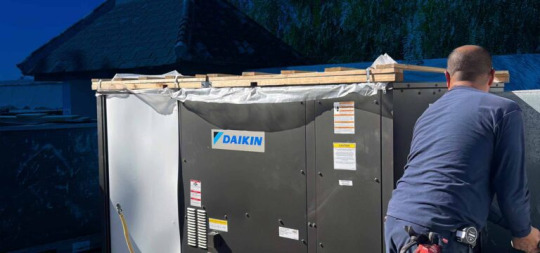
We provide Commercial HVAC installation Services Los Angeles and ventilation systems across Los Angeles CA. Visit Universal Heating & Air for more information out more.
0 notes
Text
MESSMER MECHANICAL: Jasper's Premier HVAC, Plumbing & Commercial Experts
MESSMER MECHANICAL offers comprehensive HVAC and plumbing solutions in Jasper, including new AC system Jasper, reliable AC repair Jasper, new heating system Jasper, and expert heating repair Jasper. We provide plumbing repair Jasper, water heater Jasper, and drain cleaning Jasper. Our expert plumber Jasper handles residential and commercial needs like commercial HVAC repair Jasper and commercial plumbing Jasper, ensuring comfort and functionality for your property.
#New AC System Jasper#Plumbing Repair Jasper#New Heating System Jasper#Water Heater Jasper#Plumber Jasper#Plumbing Jasper#AC Repair Jasper#Heating Repair Jasper#Clogged Drain Jasper#Commercial Boiler Services Jasper#Commercial Chiller Services Jasper#Commercial HVAC Maintenance Plan Jasper#Dustless Air System Jasper#New Water Heater Jasper#Tankless Water Heater Jasper#Commercial HVAC Installation Jasper#Commercial HVAC Repair Jasper#Commercial Plumber Jasper#Commercial Plumbing Jasper#Commercial Refrigeration Jasper#Cooling Tower Services Jasper#Drain Cleaning Jasper#Kitchen Plumbing Upgrades#Rooftop HVAC Systems Jasper#Geothermal Heat Pump Jasper#Water Treatment Jasper#Bathroom Plumbing Upgrades#Commercial Design-Build Contractor Jasper
0 notes
Text

A comfortable summer in Winnipeg starts with the right air conditioning solution—and more importantly, the right installer. Whether you’re upgrading an old system or installing A/C for the first time, professional installation ensures efficiency, safety, and long-term value. With the right system in place, you’ll be ready to enjoy every sunny day from the cool comfort of your home.
Ready to get started? Contact a trusted local HVAC installer today for a free quote and expert advice.
#air conditioning installation Winnipeg#HVAC services Winnipeg#Winnipeg A/C installers#residential cooling Winnipeg#ductless air conditioner Winnipeg#central air conditioning Winnipeg#A/C repair and installation Winnipeg#HVAC contractors Manitoba#cooling services Winnipeg#emergency A/C installation Winnipeg#affordable air conditioning Winnipeg#air conditioning for homes Winnipeg#energy-efficient A/C systems Manitoba#best air conditioning service Winnipeg#install air conditioner Winnipeg#home air conditioning experts Winnipeg#mini-split installation Winnipeg#HVAC companies Winnipeg#Winnipeg summer cooling solutions#Manitoba climate control installation#home improvement Winnipeg#property upgrades Winnipeg
0 notes